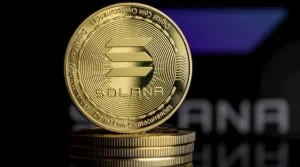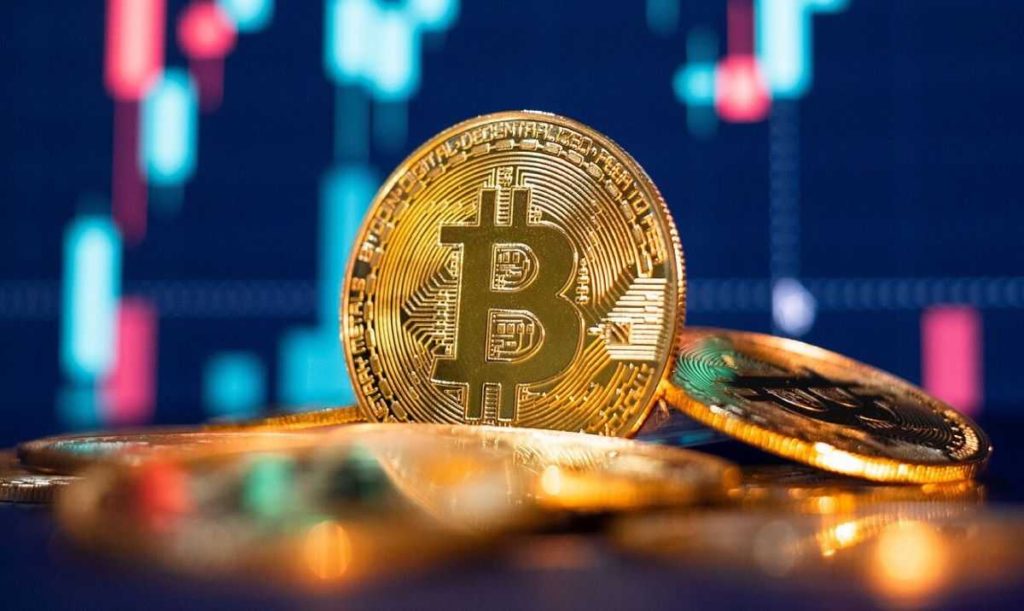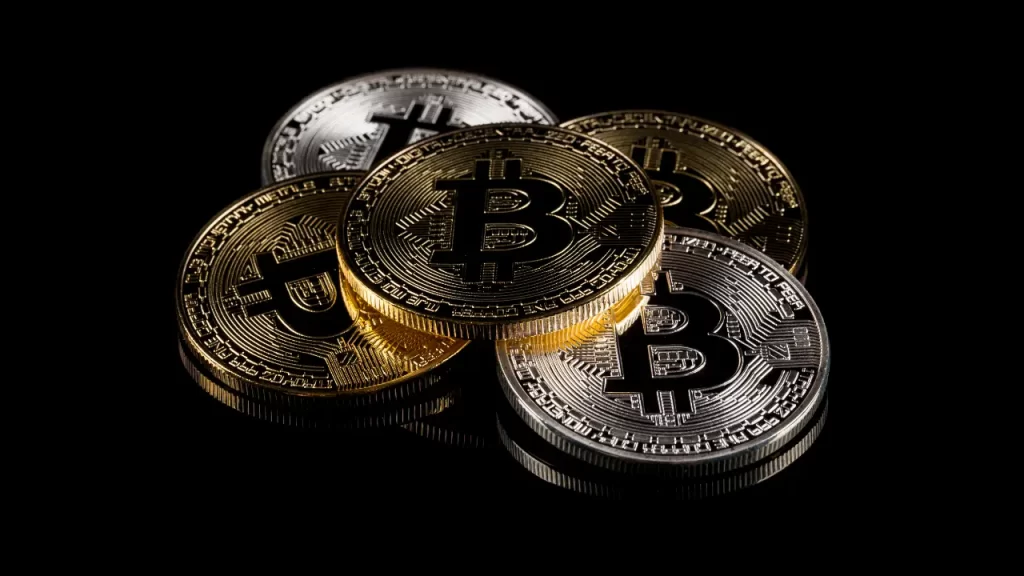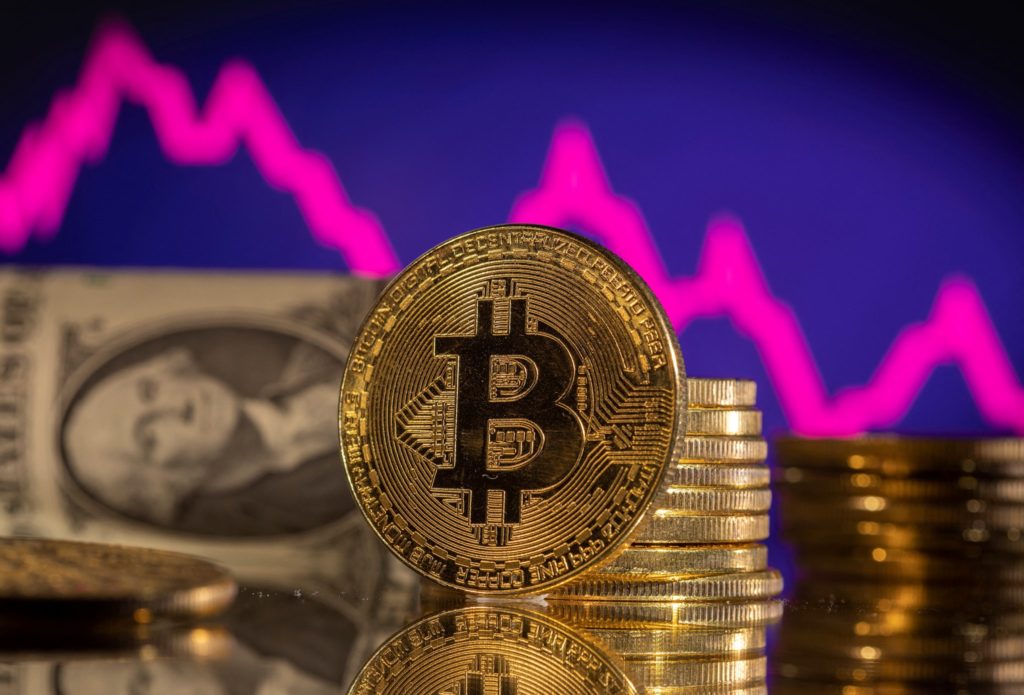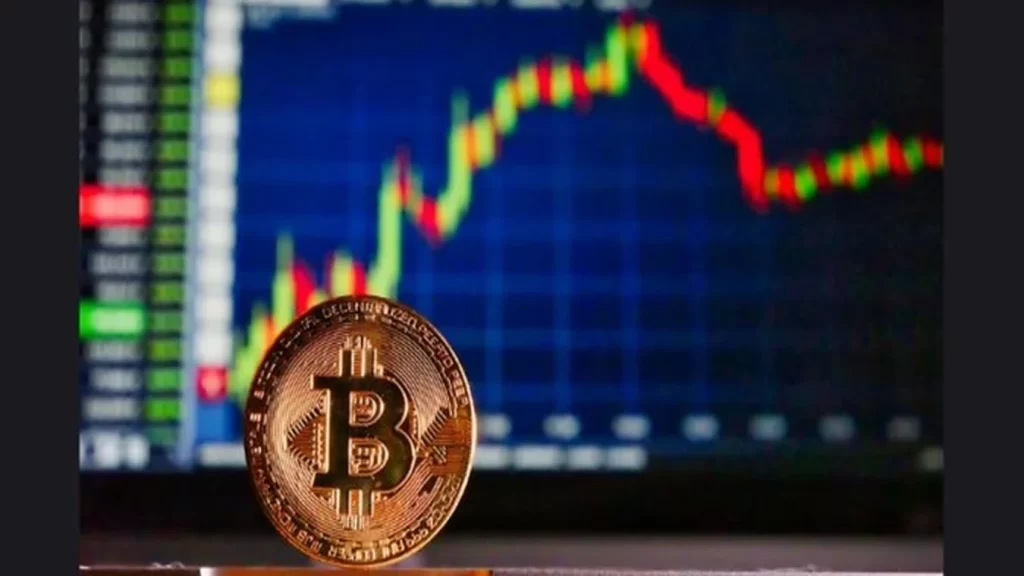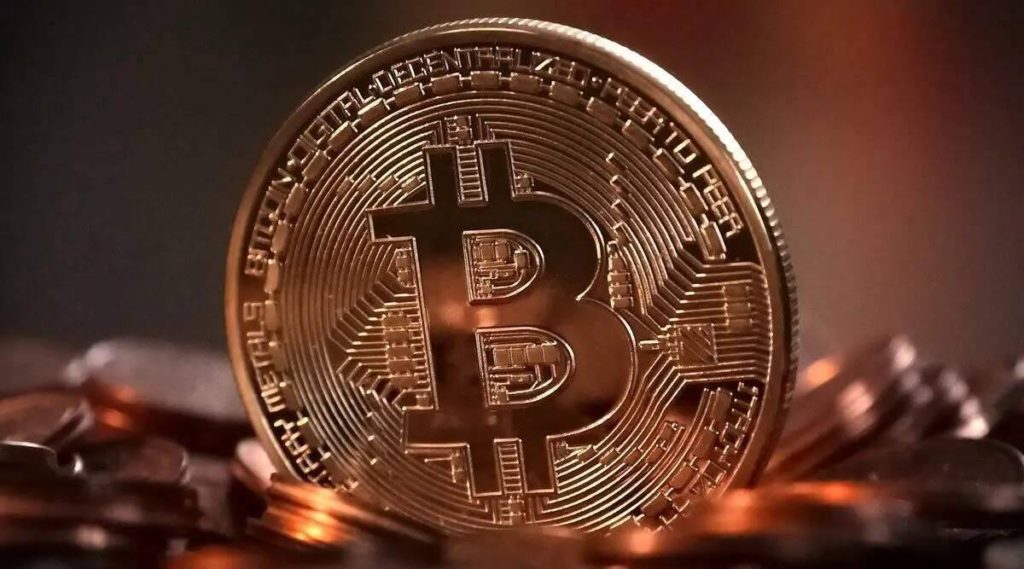Bitcoin (BTC) is exhibiting on-chain activity reminiscent of the period preceding its historic surge to all-time highs in 2021, recent data reveals.
In a post shared on August 25th, Ki Young Ju, the CEO of CryptoQuant, a prominent analytics platform, disclosed that Bitcoin velocity has reached multiyear lows.
This trend indicates reduced movement of BTC at its current price levels, resulting in a lack of pronounced buying or selling pressures.
The concept of velocity, which gauges the rate of BTC units traversing the network, highlights this stagnant state.
CryptoQuant’s data highlights that on a daily basis, this metric is currently at levels that were last observed back in October 2020.
Ki Young Ju offered a two-fold perspective on this situation.
On one hand, it can be interpreted positively as evidence of whales retaining their BTC holdings.
Conversely, it could also be perceived negatively due to the limited transfer of BTC to new investors.
This scenario extends to high-volume traders as well, indicating a subdued trading activity amongst them.
This aligns with the narrative that the market is cautiously observing Bitcoin’s movements, adopting a “wait and see” approach.
READ MORE: Bitcoin’s Evolution Accelerates: Recursive Inscriptions Unveil New Horizons Beyond Cryptocurrency
Notably, the early months of the year witnessed the influx of fresh capital into the market, coinciding with BTC/USD’s impressive Q1 performance, achieving a remarkable 70% gain.
A significant aspect lies in the volume data. In late 2020, a similar pattern emerged where a low point in this metric coincided with Bitcoin’s surge past $20,000 and eventually reaching new all-time highs a year later.
However, in contrast to that period, Bitcoin’s current value of $26,000 seems to be oversold according to its daily relative strength index (RSI), as indicated by Cointelegraph Markets Pro and TradingView.
A recent report by Cointelegraph highlighted that the 12-hour RSI has hit a five-year low this month and is yet to recover, reflecting a delay in the resurgence of investor interest.
In conclusion, Bitcoin’s on-chain behavior is resembling the prelude to its previous historic price rally.
The slowed movement of BTC and the subdued trading activities among high-volume investors reflect a sense of caution prevailing in the market.
However, the oversold RSI suggests a potential for renewed investor engagement, albeit with a delay.
Other Stories:
Binance’s Russian P2P Crypto Exchange Renames Sanctioned Banks Amidst Controversy
XRP Faces Investor Sell-Off as Whale Transfers 29 Million Tokens Amid Price Dip
Galaxy Digital Poised to Manage FTX’s Recovered Cryptocurrency Holdings
Nearly six years after initially reaching the $20,000 milestone, Bitcoin’s value has remained at that level when adjusted for inflation.
Data from various sources, including the U.S. Inflation Calculator, indicates that the performance of BTC’s price has essentially stagnated since 2017.
While Bitcoin has fluctuated around the $20,000 mark since marking it as an all-time high in 2017, its value against the USD surged as high as $69,000 during the interim period.
However, considering inflation, the narrative around BTC’s price action takes on a different hue.
As of August 25, 2023, the value of $20,000 worth of BTC purchased in 2017 has appreciated to $24,942.
To put it differently, the current spot price of Bitcoin, which is $26,050 according to data from Cointelegraph Markets Pro and TradingView, reflects six years of relatively unchanging BTC price dynamics.
BTCGandalf, the anonymous marketing officer at Bitcoin mining firm Braiins, remarked on this development during the week, acknowledging that, when adjusted for inflation, Bitcoin is only slightly above its 2017 market peak.
Commentators on X platform further observed that this calculation was based on official inflation statistics, implying that in actuality, the value of BTC/USD might even be lower than during its previous cycle peak.
Some humorously concluded that these figures underscored Bitcoin’s capacity to serve as a store of value.
BTCGandalf added that they were taken aback by the limited attention this matter had received.
Simultaneously, the United States’ national debt has reached a staggering $32.7 trillion, while concerns about U.S. inflation continue to be of paramount interest for risk-focused investors, including those involved in cryptocurrencies.
With official data signaling a deceleration in inflation, hopes are pinned on the Federal Reserve to align economic policies with the perceived reality.
READ MORE: Bitget Cryptocurrency Exchange Enhances KYC Procedures to Align with Global Regulations
On August 25, Fed Chair Jerome Powell is slated to present a policy statement at the annual Jackson Hole Economic Symposium, an event that is being closely monitored by those anticipating a deviation from Bitcoin’s current price status quo.
Keith Alan, co-founder of monitoring resource Material Indicators, indicated a preparedness for potential lows and volatile fluctuations, suggesting that a double bottom could potentially set the stage for recovery, despite the possibility of further downward movement.
A corresponding chart depicted the BTC/USD order book on Binance, highlighting a scarcity of substantial liquidity beyond $25,000, thereby increasing the likelihood of rapid and significant price shifts.
Other Stories:
Ordinal Inscriptions Maintain Dominance on Bitcoin Network Despite Price Dip
New DeSo Network Friend.tech Generates Over $1 Million in 24 Hours
UK Prime Minister Allocates £100 Million to Acquire Computer Chips for AI Advancement
Hong Kong’s HashKey cryptocurrency exchange is gearing up to introduce Bitcoin and Ether trading services for retail clients from August 28, as reported by local media.
A unique feature of this offering is that investors can allocate a maximum of 30% of their total net worth to cryptocurrencies on the platform.
This milestone achievement was made possible after HashKey successfully upgraded two significant licenses granted by the Securities and Futures Commission (SFC) of Hong Kong, becoming the first crypto exchange in the region to gain regulatory approval for extending crypto trading services to retail investors.
The initial license, classified as Type 1, empowered HashKey to establish a virtual asset trading platform within the boundaries of Hong Kong’s securities regulations.
The second license, referred to as Type 7, bestowed the exchange with the authority to furnish automated trading services to both individual and institutional users.
Following suit, OSL, another crypto platform, also secured the SFC’s green light to introduce retail trading services for Bitcoin and Ether.
This strategic move has positioned Hong Kong as one of the pioneering jurisdictions that officially permit cryptocurrency retail trading in accordance with the law.
READ MORE: New DeSo Network Friend.tech Generates Over $1 Million in 24 Hours
Hong Kong embarked on a journey to cultivate a crypto-friendly atmosphere within its borders in 2023. Financial Secretary Paul Chan expressed the government’s and regulators’ commitment to fostering a flourishing crypto and fintech ecosystem.
In March, over 80 crypto firms expressed their intent to establish a presence in the region.
The Hong Kong Monetary Authority (HKMA) further endorsed this stance by urging banks to facilitate services for cryptocurrency enterprises.
By May, HKMA unveiled a licensing structure for crypto platforms, with a deadline set for June 1.
Subsequently, a few crypto platforms received the nod to extend crypto trading facilities to both retail and institutional clientele by August.
The significance of a robust regulatory framework that safeguards investor interests is particularly evident in Hong Kong’s case.
HashKey’s decision to limit retail traders to Bitcoin and Ether underscores the exchange’s commitment to meeting their needs while ensuring prudential standards are maintained.
Despite attempts to solicit comments, HashKey remained unresponsive to inquiries from Cointelegraph as of the time of publication.
Other Stories:
Bitget Cryptocurrency Exchange Enhances KYC Procedures to Align with Global Regulations
Ordinal Inscriptions Maintain Dominance on Bitcoin Network Despite Price Dip
UK Prime Minister Allocates £100 Million to Acquire Computer Chips for AI Advancement
Earlier this year, a novel concept known as Ordinals emerged, causing a stir in the Bitcoin community.
Ordinals introduced a distinctive marking on the smallest unit of Bitcoin, the Satoshi.
While some dismissed it as spam, others embraced it as a bridge for BRC-20 tokens and NFTs onto the Bitcoin platform. This innovation sparked a series of advancements.
Now, attention is shifting to “recursive inscriptions,” a complex but potentially powerful evolution.
Recursive inscriptions offer the promise of enabling more intricate functionalities on the Bitcoin blockchain, similar to Ethereum’s smart contracts.
Enthusiasts believe that recursive inscriptions could catalyze Ordinals’ progression from NFTs and digital artifacts to forming the foundation for a comprehensive decentralized finance (DeFi) ecosystem on Bitcoin.
There are also expectations that it could facilitate Bitcoin’s expansion into competing with decentralized storage provider IPFS, or even the creation of an interconnected on-chain supercomputer.
Stanford PhD Danny Yang, the creator of OCM Dimensions and a Bitcoin enthusiast since 2013, regards recursive inscriptions as the key to the next phase of Bitcoin’s evolution.
He envisions them enabling the emergence of valuable digital assets beyond just NFTs.
While these advancements remain speculative and early-stage, they are rejuvenating interest in Bitcoin.
Despite being a subject of criticism for not covering Bitcoin extensively, it’s now evident that meaningful developments are unfolding.
Danny Yang has been actively working on recursive inscriptions since February, demonstrating their potential through projects like OCM Dimensions and OCM Genesis.
READ MORE: UK Prime Minister Allocates £100 Million to Acquire Computer Chips for AI Advancement
These projects showcase the possibilities unlocked by recursive inscriptions, marking a significant turning point in people’s understanding of their significance.
Recursive inscriptions expand the horizons of Bitcoin applications by interlinking data through a chain of calls, much like smart contracts.
This functionality enables the hosting of complex data sets on the Bitcoin blockchain, such as video and audio files, which was previously unfeasible.
Furthermore, these inscriptions can be reused, drastically reducing storage costs.
This mechanism offers a multitude of possibilities, from hosting open-source libraries on-chain to enabling applications like on-chain AI, effectively building a community-driven public infrastructure.
Although still in its infancy, the potential impact of recursive inscriptions and smart contracts on Bitcoin is vast.
They could pave the way for a Bitcoin-native DeFi ecosystem and challenge data storage conventions through the blockchain’s decentralized nature.
This wave of innovations is transforming Bitcoin’s image and fostering a new era of development driven by creators and developers.
In conclusion, the emergence of Ordinals and subsequent recursive inscriptions is reinvigorating Bitcoin’s landscape.
These developments hold the potential to redefine Bitcoin’s role, from being a simple currency to a dynamic platform for diverse applications.
As the Bitcoin community begins to grasp their implications, a future filled with possibilities is emerging.
Other Stories:
Bitget Cryptocurrency Exchange Enhances KYC Procedures to Align with Global Regulations
Ordinal Inscriptions Maintain Dominance on Bitcoin Network Despite Price Dip
New DeSo Network Friend.tech Generates Over $1 Million in 24 Hours
Bitcoin’s influence in West Africa is particularly prominent in Nigeria, a key player in the region’s economic landscape.
Yet, amid growing anti-French sentiment, French-speaking West African nations are also witnessing a surge in Bitcoin-related activities.
Senegal has inaugurated Bitique, its inaugural physical Bitcoin exchange and educational hub. Additionally, a Bitcoin Forum is scheduled for December in Dakar, Senegal’s capital.
Notably, a local Bitcoin advocate, Nourou, manages an autonomous Bitcoin node via satellite technology.
Meanwhile, Benin, located west of Nigeria, is preparing for its first exclusive Bitcoin Mastermind conference.
This pioneering event will unite local crypto enthusiasts and entrepreneurs from groups like Izichange, GoesPay, and Flash, fostering a space for Bitcoin education.
Nourou, founder of Dakar Bitcoin Days and Bitcoin Senegal, and Loïc Kassamoto, creator of Bitcoin Mastermind, offer insight into West Africa’s crypto evolution.
These French-speaking countries are beholden to the West African CFA franc currency, a remnant of colonialism.
Dissatisfaction with this currency has amplified anti-French sentiment, evidenced by recent public demonstrations and actions like Mali’s abandonment of the French language.
READ MORE: FTX Founder Seeks Release for Defense Collaboration
The region is witnessing a surge in alternative currency initiatives, with Bitcoin gaining traction as a savings mechanism and medium of exchange.
In contrast to online discussions in the West, West African countries prioritize in-person meetups for financial discourse.
Although the pandemic temporarily shifted discussions to virtual platforms, a post-pandemic resurgence of physical spaces is underway.
Kassamoto highlights the significance of real-world interactions in advancing financial literacy and demonstrating Bitcoin’s potential in West Africa. He emphasizes the role of conferences, meetups, and stores in educating and engaging the community.
Nourou has established Bitique as Dakar’s inaugural physical Bitcoin store, not only facilitating cryptocurrency transactions but also offering in-person educational programs. Moreover, Bitcoin Senegal’s “Baol Digital Kids” initiative imparts Bitcoin and Lightning Network usage to children.
Across borders in Benin, Kassamoto and his peers maintain one of the country’s first Bitcoin nodes.
While Bitcoin adoption grows, Kassamoto acknowledges associated risks due to the broader crypto space’s challenges.
He distinguishes Bitcoin from other cryptocurrencies and underscores the importance of the West African community’s grasp of this distinction.
Bitcoin meetups continue to expand, providing platforms to differentiate Bitcoin from the broader crypto market.
Notably, the Central African Republic’s adoption of Bitcoin as legal tender garnered attention, though its subsequent development of Sango Coin and experimentation with asset tokenization diverted focus.
Ghana will also host a significant Bitcoin and educational conference this year, contributing to the ongoing Bitcoin education drive in West Africa.
Other Stories:
Bybit Unveils NFT Collection as Part of Velocity Series
Global Disparities in Bitcoin Mining Costs Highlighted: From $208,560 in Italy to $266 in Lebanon
SEC Lawsuit Stifles XRP’s US Adoption Potential, Pro-XRP Advocate Asserts Amid Coinbase’s Moves
Numerous conjectures arise whenever the price of Bitcoin undergoes a sudden and steep plummet.
The usual suspects encompass government regulations, potential price manipulation by exchanges, actions of Bitcoin whales, overleveraged traders, and even certain conspiracies involving Tether.
Between August 15 and 18, Bitcoin encountered a notable 12% decline in its price.
This occurrence adhered to a familiar sequence, eliciting a range of explanations from analysts and experts.
Nevertheless, the decentralized nature of cryptocurrencies and the opacity prevailing among exchanges create hurdles in confirming whether a particular entity influenced the price shift.
On August 11, Ceni, a co-founder of Ceni Capital, offered a prediction that manifested partially correct. Ceni foresaw a Bitcoin price below $29,000, envisioning that the United States Securities and Exchange Commission (SEC) might delay its verdict concerning the ARK Bitcoin exchange-traded fund (ETF).
It’s important to acknowledge that this prediction lacked specifics regarding timing and precise support levels. Consequently, the statistical basis for this theory becomes less reliable.
Despite this, Ceni has indicated BlackRock as a conceivable initiator of Bitcoin’s downturn, a proposition necessitating thorough inquiry.
The notion that BlackRock might gain from a reduced Bitcoin price prior to launching a spot Bitcoin ETF is not as straightforward as it may appear.
While the concept of a lower Bitcoin price heightening profitability upon ETF introduction might seem logical, various factors could misalign with BlackRock’s broader interests.
Primarily, BlackRock has established itself as a reputable financial institution grounded in upholding market stability and investor confidence.
An abrupt and substantial drop in Bitcoin’s worth could undermine the general credibility of the cryptocurrency market, a situation BlackRock would aim to evade.
Preserving the market’s legitimacy might outweigh immediate gains stemming from a low Bitcoin price.
Secondarily, obtaining regulatory endorsement is pivotal for launching any financial product, particularly in the cryptocurrency realm.
The SEC diligently evaluates potential manipulation risks and safeguards for investor security.
Engaging in actions that could be construed as price manipulation might imperil BlackRock’s prospects of obtaining necessary regulatory approvals for its ETF proposition.
Lastly, fostering investor assurance holds paramount significance when introducing any investment product, particularly a novel one such as a Bitcoin ETF.
A sharp descent in Bitcoin’s price could erode trust among investors, not solely in the asset class itself, but also in the ETF.
Hence, BlackRock’s vested interest probably lies in unveiling the ETF amid a phase of positive sentiment, wherein investors feel assured about potential future gains.
Another frequently pondered likelihood when elucidating a Bitcoin price drop is the potential for government intervention in the cryptocurrency sector. The motive behind regulation would be to curtail demand, bolstering the strength of the U.S. dollar.
READ MORE: Bybit Unveils NFT Collection as Part of Velocity Series
Typically, these theories propose measures to oversee stablecoins and non-U.S.-based exchanges.
Market analyst Joe Kerr discussed this on X (formerly Twitter).
However, this theory faces challenges and factors that render it less plausible.
Firstly, government wallets can be tracked to a degree, but it’s crucial to remember that governments typically possess only a fraction of all Bitcoin, thus their sway over the entire market remains limited.
Moreover, the notion of speculating against the price of BNB is not as facile as it sounds.
Traders aiming to bet against BNB would need to borrow it, a feat unfeasible on regulated platforms.
Furthermore, by scrutinizing Binance’s transparency page, one can ascertain in real-time whether the exchange’s Bitcoin wallets are dwindling compared to other exchanges.
This might indicate unusual activities, such as improper utilization of customer funds or financial predicaments.
Tangible data from these observations holds more value than mere conjecture, offering insights into the exchange’s performance.
Ultimately, most of these theories hinge on assumptions and oversimplifications, disregarding the intricate nature of cryptocurrency markets, exchanges, and regulations.
The actual outcomes might substantially diverge from suggested hypotheses.
While the truth might forever remain elusive to the public, individuals can at least dismiss theories like BlackRock deliberately crashing Bitcoin prior to a spot Bitcoin ETF approval.
Other Stories:
FTX Founder Seeks Release for Defense Collaboration
Global Disparities in Bitcoin Mining Costs Highlighted: From $208,560 in Italy to $266 in Lebanon
SEC Lawsuit Stifles XRP’s US Adoption Potential, Pro-XRP Advocate Asserts Amid Coinbase’s Moves
On August 22nd, Bitcoin exhibited a noteworthy departure from prevailing trends, as it gravitated towards the $26,000 mark, capturing the attention of intraday BTC price movements.
Despite being in a state of significant overselling, as indicated by the relative strength index (RSI), Bitcoin displayed an unyielding resistance to staging any form of recovery rebound from its levels last observed two months earlier.
Market participants grew increasingly restless, with prominent trader Jelle characterizing the intraday fluctuations as the ominous “death chop.”
Monitoring entity Material Indicators likened the current scenario to a high-stakes game of chicken, anticipating a decisive move that would break the ongoing choppy pattern.
A comprehensive analysis of liquidity within the Binance BTC/USD order book conducted by Material Indicators unveiled a general paucity of liquidity, thereby intensifying the potential for a sharp and abrupt price shift in either direction.
The entity elaborated on the prevailing situation on X (formerly Twitter), stating, “The market is in a state of anticipation, gauging whether greater bid or ask liquidity will be drawn towards this range.”
Despite observing minor increments of bid liquidity moving from the $20,000 threshold towards the active trading zone, no substantial liquidity – either freshly introduced or relocated – was found to be fortifying the range against a potential dip to a lower low (LL).
The implications were considerable, particularly for bullish sentiments, as a LL could jeopardize even the foundational support at $20,000.
READ MORE: SEC Lawsuit Stifles XRP’s US Adoption Potential, Pro-XRP Advocate Asserts Amid Coinbase’s Moves
Material Indicators underscored that the outcome would be of paramount significance, potentially driving BTC to levels below $20,000 if two consecutive LLs were to materialize.
On a more optimistic note, there remained a glimmer of hope that Bitcoin could reclaim its broader upward trajectory.
Michaël van de Poppe, the founder and CEO of Eight, a trading firm, emphasized the heavily oversold signals emanating from the RSI in a dedicated YouTube update on August 22nd.
Highlighting RSI measurements of under 19 on 12-hour timeframes, which were comparable to levels during the 2018 bear market nadir, and analogous daily measurements, which mirrored the lows witnessed during the March 2020 COVID-19 market crash, van de Poppe inferred that such downturns often precipitate a V-shaped recovery, culminating in equilibrium at a higher floor.
Anticipating a resurgence targeting $26,500 or beyond, van de Poppe articulated a distinct possibility of Bitcoin mirroring a trajectory akin to the prelude of the previous bull market.
Drawing parallels with the market dynamics of September 2020, Jelle alluded to a gradual ascent and absorption, echoing a pattern that could potentially unfold in the current scenario, thereby fostering an environment reminiscent of the commencement of the prior bull market.
Other Stories:
Bybit Unveils NFT Collection as Part of Velocity Series
Global Disparities in Bitcoin Mining Costs Highlighted: From $208,560 in Italy to $266 in Lebanon
A former Chinese government official, Xiao Yi, has received a life sentence for his involvement in illicit business activities linked to a substantial Bitcoin mining venture valued at 2.4 billion Chinese yuan (approximately $329 million).
This ruling was accompanied by additional convictions related to corruption charges. The Intermediate People’s Court of Hangzhou City pronounced the sentence on August 22.
Xiao Yi, a previous member of the Jiangxi Provincial Political Consultative Conference Party Group and vice chairman, was found guilty of corruption and abuse of power.
The corruption allegations primarily revolved around non-crypto matters, specifically bribery that spanned from 2008 to 2021.
In addition, abuse of power charges were based on actions taken between 2017 and 2021, where financial and electricity subsidies were provided to Jiumu Group Genesis Technology, a company located in Fuzhou.
Notably, this firm managed over 160,000 Bitcoin mining machines at one point.
Prosecutors argued that Yi orchestrated a concealment of the mining operation.
He allegedly directed various departments to falsify statistical reports and manipulate electricity consumption records.
During the period from 2017 to 2020, Jiumu Group Genesis Technology was responsible for 10% of Fuzhou’s total electricity usage.
The court noted that Xiao Yi admitted guilt, demonstrated remorse, returned embezzled funds, and all confiscated bribes and their profits were recovered.
READ MORE: FTX Founder Seeks Release for Defense Collaboration
China currently prohibits cryptocurrency transactions, exchange activities, and the conversion of fiat currency to crypto. However, complete ownership of cryptocurrencies has not been explicitly banned.
In a recent decision on August 3, a Chinese court invalidated a $10 million Bitcoin lending contract based on the country’s Bitcoin-related restrictions, precluding any legal recourse for debt recovery.
Additionally, on August 14, a Chinese citizen was sentenced to nine months in prison for aiding an associate in purchasing Tether, earning a $20 profit from the transaction.
In conclusion, Xiao Yi, a former Chinese government official, has been handed a life imprisonment sentence for his involvement in unauthorized business endeavors tied to a substantial Bitcoin mining venture and for corruption-related charges.
This verdict underscores China’s strict stance on cryptocurrency-related activities, while various legal actions continue to unfold in the country’s evolving regulatory landscape.
Other Stories:
Bybit Unveils NFT Collection as Part of Velocity Series
Global Disparities in Bitcoin Mining Costs Highlighted: From $208,560 in Italy to $266 in Lebanon
SEC Lawsuit Stifles XRP’s US Adoption Potential, Pro-XRP Advocate Asserts Amid Coinbase’s Moves
Despite a recent decrease in Bitcoin’s price and speculation about the fading hype around Bitcoin NFTs, ordinal inscriptions have continued to dominate the Bitcoin network’s activity in the past week.
On August 21, the developer known as “Leonidas,” responsible for Ordinals, highlighted that the Bitcoin network had processed 530,788 transactions within the last 24 hours.
Astonishingly, 450,785 of these transactions were Ordinals related, comprising a substantial 84.9% of Bitcoin’s total activity.
This defies the narrative claiming Ordinals’ demise.
Supporting this trend, data from Dune Analytics substantiates the phenomenon, recording over 400,000 ordinal inscriptions on August 20.
In contrast, Bitinfocharts records a daily Bitcoin transaction count around 556,000, implying that more than 75% of network activity on August 20 stemmed from Ordinals.
Industry researcher Eric Wall further corroborated this by noting that during the week, an impressive 54% of Bitcoin’s transactions were Ordinals.
Dune Analytics indicates that a staggering 25.5 million Ordinal inscriptions have taken place, generating an impressive $53.4 million in fees on the Bitcoin network.
READ MORE: Crypto Influencer Files $16 Million Lawsuit Against Bitget Exchange
These inscriptions are primarily driven by the minting of BRC-20 tokens, with a remarkable 1.9 million of them minted in the previous week.
These recent observations stand in stark contrast to a DappRadar report on August 17.
The report suggested that Ordinals NFT usage and sales volume had experienced a decline since their peak in May.
However, it’s crucial to note that this report tracked NFT sales and trading volume on the Bitcoin network, not the underlying inscription activity that continues to surge.
Bitcoin Ordinals represent nonfungible asset artifacts designed to facilitate data inscription onto Satoshis, the smallest Bitcoin units.
Introduced in January, the subsequent months witnessed a surge in inscription popularity as thousands of Ordinals were minted on the Bitcoin network.
This surge led to network congestion and spikes in transaction fees, culminating in peak congestion during April and May.
Other Stories:
US Tech Giant Fires New Warning About ChatGPT
Crypto Industry Adapts to Bear Market
Bored Ape Yacht Club’s Yuga Labs to Scale Back OpenSea Support
Elon Musk, previously associated with Twitter and now chairman and chief technology officer of X, has expressed admiration for Vivek Ramaswamy, an emerging figure in the realm of United States Republican presidential candidates.
In response to a segment of Vivek Ramaswamy’s interview on the Tucker Carlson’s Tucker on Twitter podcast, Musk took to Twitter to commend him, highlighting that Ramaswamy holds the distinction of being the youngest-ever Republican presidential candidate.
Musk also emphasized Ramaswamy’s potential, labeling him as a highly promising candidate.
Ramaswamy is renowned for his forthright viewpoints on digital finance and cryptocurrencies. He has been actively advocating for a more robust crypto ecosystem within the United States.
This commitment was evident at the Bitcoin 2023 conference held in Miami, where he announced that his presidential campaign would be open to receiving contributions in Bitcoin.
This move marked Ramaswamy as the second contender in the 2024 U.S. election race to embrace BTC donations.
During the conference, Ramaswamy unveiled a QR code, directing participants to a donation portal that offered various channels for contributions.
READ MORE: Bitcoin Hovers Near 2-Month Lows Amidst Extensive Liquidations and Market Uncertainty
Supporters who made donations within the stipulated limit of $6,600 were offered an exclusive nonfungible token, a distinctive feature of his campaign strategy.
Ramaswamy’s approach echoes that of Robert F. Kennedy Jr., who became the pioneer U.S. presidential aspirant to embrace Bitcoin donations, underscoring the escalating importance of cryptocurrencies in shaping the future financial landscape.
The growing popularity of Ramaswamy has led to his association with fellow Republican Ron DeSantis, the Bitcoin-friendly Governor of Florida, creating an environment of shared interests and goals.
However, Ramaswamy’s foray into the realm of politics is not without its challenges.
Presently, he confronts two legal cases brought forward by former employees of Strive Asset Management, a company he co-founded.
These former employees allege that they were coerced into violating securities regulations during their tenure at the firm.
In summation, the acknowledgment from influential figures like Elon Musk and Ramaswamy’s bold stance on cryptocurrency contributions underscore the impact of this emerging candidate on the evolving political and financial landscape.
Yet, his journey into politics is accompanied by legal hurdles, which add a layer of complexity to his political trajectory.
Other Stories:
Tether Discontinues Bitcoin Omni Layer Version Due to Waning Interest
Former US President Donald Trump’s Ethereum Wallet Surges to $2.8 Million
Shiba Inu’s Shibarium Network Restarts Block Production After Temporary Pause


